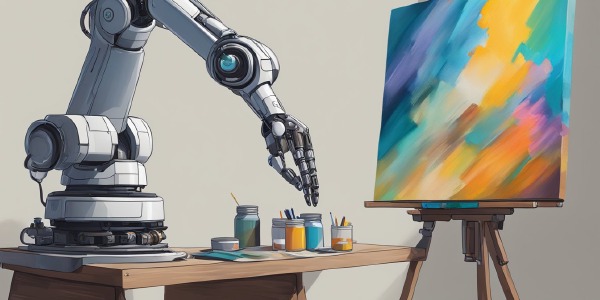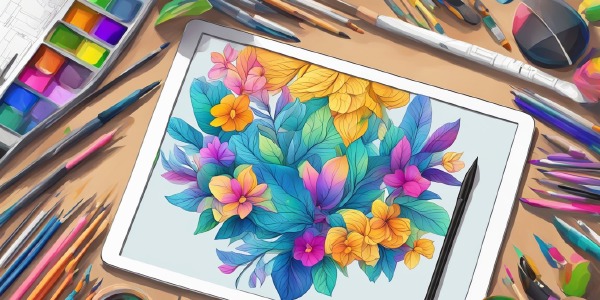Why Scratch Online is the Ideal Tool for Beginner Programmers
Learning to program can be an overwhelming journey, especially when starting from scratch.
However, Scratch Online offers an engaging platform that transforms the complex world of coding into an accessible and enjoyable experience.
This visual programming language, developed by MIT, enables beginners to create interactive stories, games, and animations, fostering a foundational understanding of programming concepts in a playful environment.

The beauty of Scratch lies in its user-friendly interface, which uses color-coded blocks to streamline the coding process.
It eliminates the need for memorizing syntax and debugging intricate text code—allowing you to focus on the logic and structure of programming.
Scratch is more than just a tool; it’s the start of a lifelong adventure in the digital realm where you can bring your imaginative ideas to life.
Scratch offers the opportunity to join a worldwide community where sharing projects and inspiration is strongly encouraged.
This collaborative environment not only amplifies the learning experience but also exposes you to diverse perspectives and ideas.
Whether it’s creating a simple animation or building a complex game, Scratch provides a platform where you can grow at your own pace and, in time, transition to more advanced programming languages with confidence.
Key Takeaways
- Scratch makes learning programming concepts approachable through its visual block-based system.
- The tool encourages creativity and allows you to develop digital projects without needing to write traditional code.
- A worldwide community supports learning within Scratch, contributing to an educational and collaborative experience.
The Philosophy of Scratch

Scratch is a visual programming language developed by the MIT Media Lab’s Lifelong Kindergarten Group. This tool is specifically designed to help you learn the fundamentals of programming in a simple and interactive way, easing the usual burdens associated with learning a new language’s syntax.
Fostering Creativity
With Scratch’s block-based programming language, the intimidating tasks of writing and understanding code become more approachable.
Instead of typing out code, you snap together colorful blocks that represent different functions and commands, which makes the learning process more intuitive.
This visual approach allows you to focus on the logic and flow of programs without getting bogged down by the complex syntax that is typical in more advanced programming languages.
- Ease of Use: By simply dragging and dropping blocks, you can build animations, games, and interactive stories.
- Creative Expression: Scratch encourages innovation by providing a wide range of blocks that can be used in limitless combinations to bring your ideas to life.
Promoting Collaboration
Scratch’s online community is a place where you can collaborate, share your projects, and learn from others.
This collaborative environment fosters critical thinking as you give and receive feedback, work together to solve problems, and see how others approach the same issues.
- Project Sharing: You can easily share your creations with the Scratch community and get inspiration from others’ projects.
- Interactive Learning: Engage with a diverse group of learners and educators from around the world, enhancing your understanding of different perspectives and cultures.
Getting Started with Scratch

Scratch is a highly accessible and user-friendly platform that enables you to jump into programming with ease. It’s designed to be intuitive, making your first foray into creating digital projects less daunting and more enjoyable.
Ease of Use
Scratch boasts an incredibly user-friendly interface that eases you into the world of programming.
You’re greeted by a colorful and inviting layout, where you can find all the tools you need to start coding. Here’s a quick guide on navigating Scratch’s ease of use:
- Getting Acquainted: Upon visiting the Scratch website, you’re encouraged to explore the interface without the burden of needing to sign up immediately, as the platform is free to use.
- Step-by-Step Tutorials: You have access to numerous helpful tutorials that guide you through various aspects of Scratch, from basic techniques to more advanced concepts.
Creating a New Project
When you’re ready to create a new project, Scratch simplifies the process:
Start a Project: Click “Create” on the Scratch homepage to begin.
Interface Overview: The interface is divided into several key areas:
- Stage Area: Displays your project’s output.
- Sprites List: Here you can add or choose characters known as sprites.
- Code Area: Contains color-coded code blocks that you can drag and drop to assemble your program.
Adding Sprites: Choose a sprite from the library or create your own. These sprites are the actors in your Scratch project.
Coding with Blocks: In the code area, blocks are categorized by their functions such as motion, looks, sound, events, etc.
Simply drag these blocks from the code menu and snap them together like puzzle pieces to form scripts that control your sprites.
This drag and drop method ensures an easy to use experience, making complex programming concepts more tangible and approachable.
Designing Interactive Media

When you start using Scratch Online, you’ll discover a world where creating interactive media is not just easy but also incredibly fun.
Let’s explore how you can bring your ideas to life by animating sprites, building games, and crafting interactive stories.
Animating Sprites
In Scratch, sprites are characters or objects that you can animate to move, dance, or even interact with other elements.
By using simple drag-and-drop blocks, you establish motion and control the sequence of your sprite’s actions. Here’s how you can animate a sprite:
- Motion Blocks: Drag blocks like
move 10 stepsto make your sprite glide across the stage. - Events: Attach
when green flag clickedto start an animation and usewhen sprite clickedfor interactive movements. - Sensing: Use sensing blocks to respond to user inputs or sprites’ positions, making your animations more dynamic.
With sound and text to speech features, you can add audio effects and dialogue to your animations, enhancing the viewer’s experience.
Building Games
Creating games in Scratch is a great way to learn coding basics while having fun.
You design each aspect of the game— from simple puzzles to complex adventures. Key components of game building include:
- Events: Trigger actions like starting or ending the game with
event blocks such as
when key pressed. - Game Mechanics: Implement rules and mechanics using variables for scoring and loops for repeating actions.
- Interaction: Integrate sensing blocks to detect collisions, mouse movements, and more.
- Science: Incorporate elements of physics, like gravity, to make your games realistic or whimsically defy laws of nature for a unique twist.
Remember to test your game frequently to ensure that it’s both fun and functional!
Crafting Interactive Stories
With Scratch, you have the power to create your own interactive stories.
You weave narratives using a combination of sprites, images, and sound to tell compelling tales. Here’s how to get started:
- Storytelling Flow: Use events like
broadcast messageandwhen I receiveto shift between scenes and reveal your story. - Interactive Elements: Add clickable objects or decision points where the audience can choose what happens next.
- Sound and Images: Set the atmosphere with background music and visuals. Import your own images or choose from the Scratch library to bring your story scenes to life.
Educational Value of Scratch

Scratch provides you with an interactive and engaging platform to learn and teach programming. This visual language simplifies complex coding concepts, making them more accessible to students and educators alike.
Codifying Concepts for Students
When you’re learning how to code, it can be challenging to understand abstract concepts like loops and conditional statements.
Scratch uses colorful blocks that snap together to help you visualize and manipulate these ideas in real time.
For example, a loop in Scratch is a c-shaped block that can visually encapsulate other blocks, clearly showing the concept of repetition.
- Variables: Represented by oval blocks, making it clear they hold data.
- Events: Hat-shaped blocks that trigger actions, illustrating cause and effect.
- Functions: With custom blocks, you can see how to encapsulate code for reusability.
This tangible approach to coding helps bridge the gap between understanding a concept and applying it, grounding your education in solid, comprehensible practices.
Teacher and Classroom Integration
Integrating Scratch into your classroom is seamless thanks to its vast online community and supportive resources.
You can find lesson plans and activities aligned with educational standards, including those from Code.org, easing the creation of a curriculum that dovetails with subjects like math.
- Collaboration: Scratch’s online platform encourages students to share and discuss projects.
- Feedback: You can give and receive comments, fostering a collaborative learning environment.
- Resources: Teachers have access to guides that align with educational standards, including integration with math concepts.
Coding Principles in Scratch

Scratch introduces you to fundamental coding principles in a way that’s engaging and interactive.
By using visual blocks, you’ll learn how to think like a programmer and understand the basic constructs that underlie most programming languages.
Learning Loops and Control
Loops in Scratch enable you to run the same set of instructions multiple times, which is essential for tasks that are repetitive in nature.
For example, to create an animation of a walking character, you don’t
need to duplicate code—instead, you use a loop block like repeat to
signify continuous movement.
Control structures, such as if conditionals, allow you to execute
code based on certain conditions, providing you with the tools to create
interactive stories and games.
Example Blocks:
repeat (10)if thenforever
Manipulating Variables and Lists
In Scratch, variables serve as containers that store data values which can be changed and manipulated throughout your project.
For instance, to keep score in a game, you create a variable named “score” and increase its value every time a player gains a point.
Lists let you organize and store sequences of data, like a high-score table or an inventory for a game character.
How to Manage Data:
- Variables: Create with “Make a Variable”
- Lists: Organize with “Make a List”
- Change data using ‘set’ and ‘change’ operations
Debugging Projects
Debugging is a critical skill in programming, and Scratch provides a visual representation that simplifies finding and fixing errors or bugs.
You’ll learn to troubleshoot by methodically testing and revising your blocks of code.
This iterative process enhances your problem-solving abilities and helps you understand the importance of accuracy in coding.
Common Debugging Steps:
- Identify the problem
- Test each block
- Revise and retry
- Monitor variable and list values for unexpected changes
Extending Beyond Scratch

Once you’re comfortable with Scratch, you have a solid foundation to explore and master other programming languages.
This progression is natural, and there are tools and resources that can help bridge the gap to more complex coding.
From Scratch to Other Languages
Your journey with Scratch has provided you with the fundamentals of logical thinking and problem-solving—skills that are directly transferable to text-based languages like Python, Java, and JavaScript.
Think of Scratch as your programming launchpad; its block-based environment mirrors the structure of written code. Here’s a breakdown of how Scratch concepts transfer to each language:
Python: Known for its readability, Python feels like a natural next step from Scratch. You’ve learned about loops and conditionals in Scratch; you’ll find that Python uses similar concepts with just a different syntax.
Scratch Python When Green Flag Clicked if __name__ == "green":Repeat for i in range():If, Then, Else if:,elif:,else:Java: A robust language, Java offers the next level of object-oriented programming. Your Scratch sprites and their interactions can be likened to Java’s classes and objects.
Scratch Concept Java Equivalent Sprite Class Costume Object’s State Script Methods JavaScript: Often used for web development, JavaScript transitions you from Scratch’s interactive projects to interactive web pages. Events like clicking the green flag in Scratch resemble JavaScript’s event listeners.
Scratch Event JavaScript Event Green Flag Clicked document.addEventListener('...', function() {})Broadcast Message window.dispatchEvent(new Event('customEvent'))
Leveraging Extensions and Community Resources
Scratch’s extensions feature allows you to integrate external hardware and additional capabilities into your projects, subtly introducing you to the concept of libraries and APIs used in professional programming.
Here are some extensions that can broaden your horizons and deepen your understanding:
- micro: Use physical computing to bring your Scratch projects into the real world.
- Google Translate: Deepen your interaction with voice recognition and language translation.
Growing with the Scratch Community

Joining the Scratch Community not only introduces you to programming but also embeds you in a network of creators where growth is fueled by collaboration and support.
Engagement and Peer Support
When you start your journey with Scratch, you’re not alone.
Imagine a playground where children from all over the world come to play and share their interactive stories. This is what the Scratch Community is like—a vast space brimming with creativity and vibrant peer support.
- Peers: Fellow learners of all ages are here to inspire and challenge you.
- Passion: Sharing projects ignites a shared passion for creation and learning.
- Collaboration: You’ll often find members teaming up to build something amazing, enhancing critical thinking skills and collaboration.
The Role of Parents and Educators
Both parents and educators play a fundamental role in your growth within the Scratch Community.
Their involvement is multi-dimensional, ensuring a safe and conducive learning atmosphere.
- Educators: They weave Scratch into their teaching, helping you understand complex concepts through fun and interactive methods.
- Parents: Beyond supervising, they participate by using Scratch to bond with you, understanding your projects and interests.
With the backing of adults, you are guided to navigate the digital realm responsibly, steering your innate curiosity towards constructive learning experiences. This mentorship is instrumental in cultivating a generation of thinkers and makers.
Global Reach and Accessibility

Scratch Online extends its programming education across the globe with a platform that’s accessible and inclusive. Its design encourages you, regardless of location or background, to create, share, and learn.
Inclusivity Through Language and Support
Scratch Online caters to a diverse global audience through support for multiple languages, ensuring that you can learn and interact in a familiar linguistic environment.
This is bolstered by its association with Lifelong Kindergarten at MIT, which promotes an ongoing commitment to education and creativity for all ages.
- Supported Languages: More than 70 languages.
- Community: A vast, supportive community for troubleshooting.
Accessibility and Tech In Education
Your experience with technology in education is enhanced with Scratch’s browser-based platform, which means you can start coding without complex installations.
- No High-End Tech Required: Works on most web-enabled devices.
- Learning Progression: Uses iteration and patterns to facilitate learning through repeated practice and recognition.
With Google’s Blockly technology, Scratch Online incorporates a visual programming language that’s intuitive and interactive.
You can effortlessly integrate various elements like LEGO pieces, which Snap together to build your program, or music to add an auditory layer to your creations.
Future of Programming with Scratch

Scratch’s ability to evolve and its emphasis on developing essential programming proficiencies positions it as a cornerstone for future programmers.
Ongoing Development and Updates
Scratch 3.0, the latest version, has a user-friendly design making it more accessible for you as a beginner.
The ongoing development ensures Scratch remains up-to-date with the latest educational trends and technologies, so you’re always learning with the best tools available.
- Fresh functionalities for more complex projects.
- Enhanced interface design for better user experience.
- New tutorials and resources to expand your learning.
Nurturing Lifelong Skills
By engaging with Scratch programming, you cultivate:
Critical Thinking:
- Break down complex problems into simpler parts.
- Approach challenges systematically.
Problem-Solving Skills:
- Utilize logical sequences in coding tasks.
- Implement iterative solutions.
Innovation:
- Translate your ideas into interactive stories and games.
- Encourage creativity through coding.
Scratch is part of the Lifelong Kindergarten group at the MIT Media Lab. It dedicates itself to cultivating an exploration-based learning environment. This resonates through your entire learning journey, laying a foundation for continuous growth in the technological domain.




